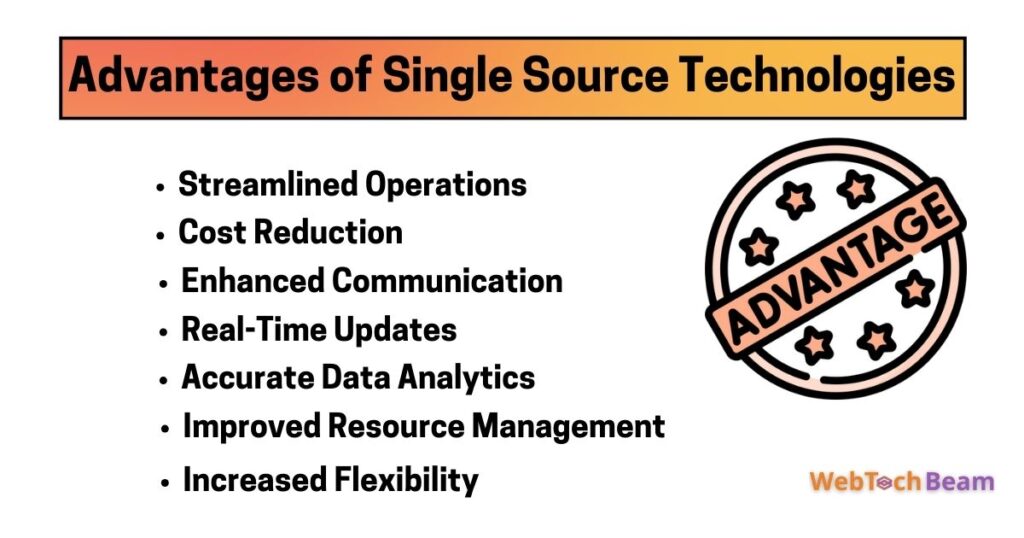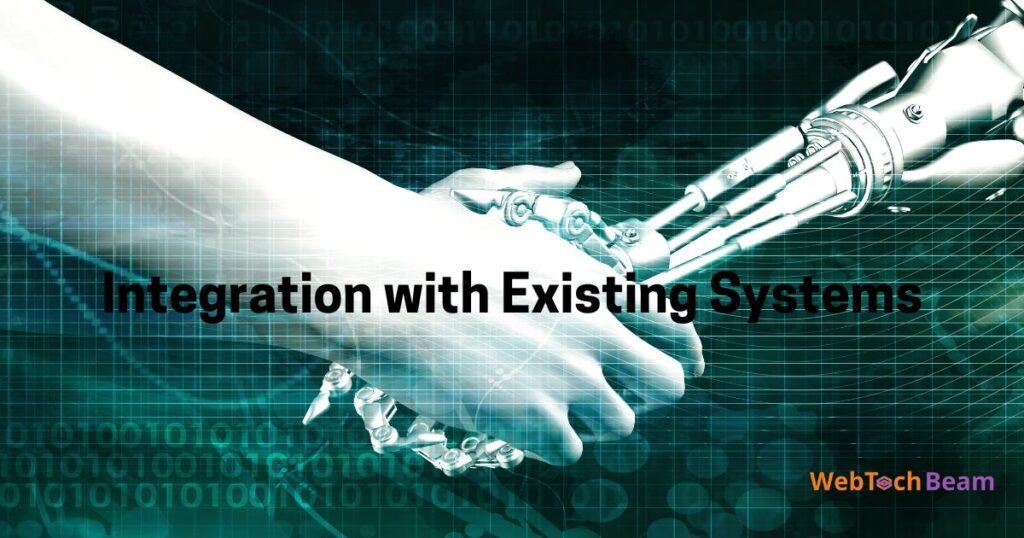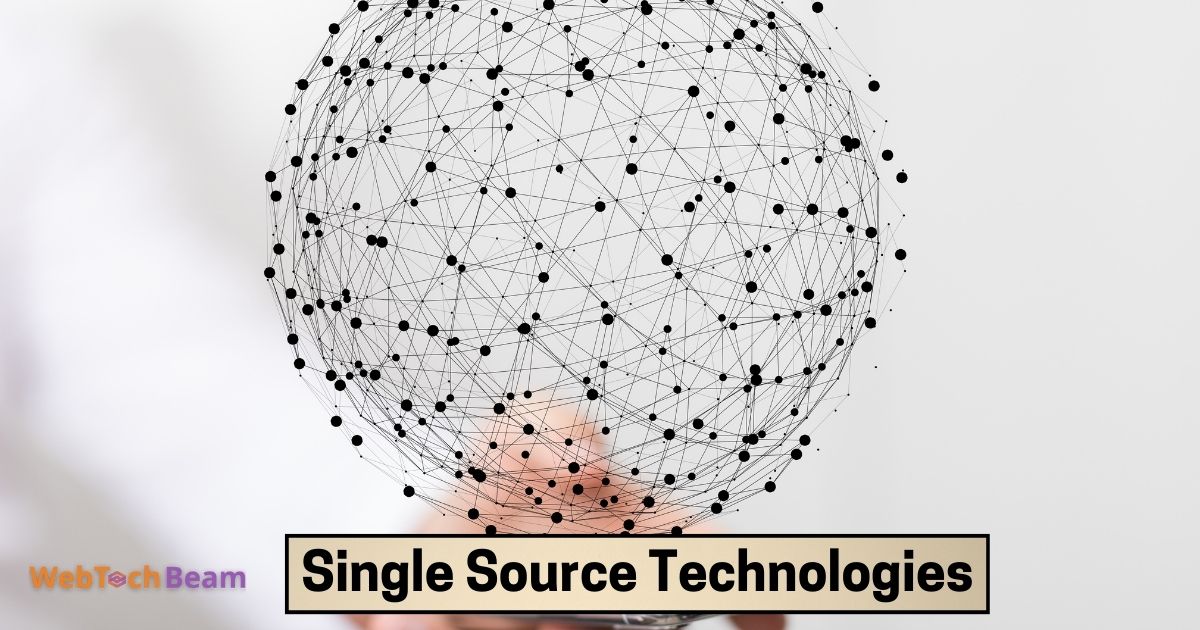Business processes are simplified by single-source technologies which combine multiple functions into a single system. This integration helps in reducing operational costs by making operations more efficient and streamlined. By effortlessly enhancing communication between different departments, businesses can benefit from these technologies.
For a responsive and agile business environment, it is recommended to embrace single-source solutions as they effectively minimize errors and greatly reduce redundancy. These solutions offer robust data analytics that aid in informed decision-making processes. Additionally, single-source technologies enable real-time updates, thereby enhancing resource management.
What is Single Source Technologies?
Single-source technologies enable businesses to consolidate multiple functions into one system, resulting in improved operational efficiency and cost reduction. By integrating various workflows, these technologies facilitate streamlined processes and enhance inter-department communication. Additionally, single-source systems effectively minimize errors and duplication for companies.
They offer precise data analytics to facilitate well-informed decision-making, enabling businesses to receive timely updates that improve resource management and flexibility. Implementing single-source technologies provides a competitive advantage in a fast-paced marketplace, fostering a more responsive and adaptable business environment.
Brief Overview of Their Importance in Modern Business
Modern business efficiency and productivity heavily rely on the significance of single-source technologies. Their role entails amalgamating different business functions into a cohesive system, thereby streamlining operations. This integration effectively curtails operational expenses, enabling businesses to enhance their competitiveness within the market. Furthermore, such technologies facilitate transparent and effective communication across departments.
Purpose of Adopting Single Source Technologies
Single-source technologies are embraced by businesses to improve operational efficiency and cost reduction. By consolidating complex processes into a unified platform, these systems streamline operations, minimize errors, and eliminate redundant tasks. Such integrated platforms provide companies with accurate, real-time data, facilitating informed decision-making. Consequently, resource management improves, and businesses become more agile. The adoption of these technologies fosters a responsive and adaptable business environment.
Understanding Single Source Technologies
Single-source technologies bring together various business functions into a unified system, enhancing efficiency by simplifying intricate procedures. Moreover, these technologies have the added advantage of substantially cutting operational expenses and mitigating mistakes.
Explanation of What Single Source Technologies Entail
By centralizing different workflows into a single platform, single-source technologies enhance inter-department communication and collaboration. This integration enables businesses to access real-time updates, leading to improved resource management. Additionally, these systems offer powerful data analytics that aid in decision-making. Ultimately, they create a dynamic and flexible business environment.
Examples of Standard Single-Source Technology Solutions
ERP systems are technology solutions that provide a single source for standardizing operations. Similarly, CRM tools also offer a single source for managing customer relationships. Unified Communication Systems combine messaging, conferencing, and collaboration tools into one integrated platform. HR Management Systems centralize employee records, payroll, and benefits administration. Lastly, Supply Chain Management Systems streamline logistics, inventory, and vendor relations.
Advantages of Single Source Technologies

- Streamlined Operations: Integrate multiple workflows into one platform, resulting in seamless business processes.
- Cost Reduction: Lower operational costs by reducing redundant tasks and minimizing errors.
- Enhanced Communication: Facilitate clear and efficient communication between different departments for better collaboration.
- Real-Time Updates: Provide timely information to help manage resources more effectively and make quick decisions.
- Accurate Data Analytics: Offer robust data analytics to support data-driven decision-making processes.
- Improved Resource Management: Enable better allocation and management of resources through real-time insights.
- Increased Flexibility: Adapt quickly to market changes with a more responsive and agile system.
- Competitive Edge: Gain an advantage by implementing efficient, streamlined, cost-effective solutions.
Identifying Business Needs
Assessing Current Business Processes and Inefficiencies
Start by evaluating the existing business processes to identify any inefficiencies. Pay attention to any recurring tasks or steps that may hinder operations. Pinpoint the bottlenecks that disrupt workflow or communication. Gain a clear understanding of the roles and responsibilities of team members involved in these processes. Create a visual representation of the workflow, including all steps and dependencies. Seek feedback from employees to uncover inefficiencies in their daily tasks. Analyze performance metrics to pinpoint areas that require improvement.
Identifying Areas Where Single-Source Technologies Could Be Applied
Identify the processes that are most inefficient for potential integration of technology. Look for tasks that are repetitive and could be streamlined by a single-source system. Pay attention to areas where frequent errors occur that could be minimized with technology. Determine departments where communication is slow or unclear. Assess if current software systems are outdated or incompatible. Take into account processes that require real-time data for improved decision-making. Focus on workflows that could be automated and integrated for maximum benefits.
Setting Clear Goals for Technology Integration
To effectively integrate technology, it is essential to establish clear and specific goals. These goals should prioritize areas such as cost reduction, improved communication, and enhanced data accuracy. It is important to set measurable targets for each objective in order to track progress. Additionally, ensure that these goals are aligned with the overall business strategy and vision. To gain everyone’s commitment, involve all stakeholders in the process of setting and agreeing upon these goals. Furthermore, establish a timeline for achieving the milestones of technology integration. Regularly monitor and review progress against these goals to ensure successful implementation.
Applications of Single Source Technologies
Inventory Management Systems
Keep track of inventory in real-time to prevent overstocking and minimize expenses associated with storage.
Customer Relationship Management (CRM) Software
Enhance client interactions and deliver personalized customer service experiences with utmost effectiveness.
Human Resources Management Systems (HRMS)
Increase accuracy by streamlining recruitment, payroll, and employee record management.
Enterprise Resource Planning (ERP) Systems
Combine multiple business processes into a single system to enhance operational efficiency and streamline reporting.
Project Management Tools
Improve team collaboration and monitor project progress by utilizing shared platforms.
Financial Management Solutions
Make financial transactions, budgeting, and reporting tasks easier for improved oversight.
Supply Chain Management (SCM) Systems
Efficiently optimize the flow of goods and services from suppliers to customers.
Document Management Systems
Our aim is to securely store and manage digital documents, guaranteeing effortless accessibility and retrieval.
Business Intelligence (BI) Tools
Deliver valuable data analytics that facilitates strategic decision-making processes.
Marketing Automation Software
Enhance outreach efforts by automating marketing campaigns and monitoring performance metrics.
Choosing the Right Technology

Researching Available Single-Source Technology Providers
Start by gathering a list of single-source technology providers in the market. Analyze their experience and industry reputation through reviews and case studies. Check if they offer technology suitable for your specific business requirements. Evaluate their customer support options and service-level agreements.
To gain insights into their service quality and client satisfaction, consider reading testimonials. Additionally, explore their technology updates and frequency of software enhancements. Assess how effectively they integrate with your current systems and processes.
Evaluating Solutions Based on Functionality, Scalability, and Cost
Evaluate the essential functions of each solution to ensure they align with your specific business requirements. Take into account the scalability of the solution for future business growth and expansion. Compare the cost structures, including implementation, maintenance, and any additional fees. Explore customization options to adapt the technology to your workflow.
Check if they provide leasing or purchasing choices that align with your budget. Assess the overall ownership cost over a span of multiple years of usage. Give preference to solutions that offer a satisfactory combination of functionality and cost-effectiveness.
Selecting a Solution That Aligns with Business Objectives
Make sure the selected solution is in line with your long-term business goals and vision. Confirm that it contributes to important objectives such as enhancing efficiency and cutting costs. Select technology that seamlessly integrates with departmental workflows and operations. Assess its flexibility to adapt to evolving market conditions and business requirements.
Conduct a test to determine if it improves communication and collaboration among various teams and departments. Incorporate feedback from pilot testing to make an educated final determination. Ensure that the solution consistently facilitates data-driven decision-making procedures.
Benefits of Using Single Source Technologies
- Operational efficiency is enhanced and redundant tasks are minimized with the implementation of single-source technologies.
- In today’s fast-paced market, they provide a distinct competitive advantage.
- Accurate, real-time data enables businesses to make informed decisions.
- These systems improve the ability to adjust and react to changes in the market.
- They promote a workplace environment that is more agile and collaborative.
- Overall, companies enjoy smoother and more efficient processes.
Implementation Plan
Developing a Comprehensive Implementation Strategy
Please develop a comprehensive strategy that breaks down each stage of the technology integration process. Clearly define the scope and objectives of the implementation. Efficiently allocate roles and responsibilities to each team member. Set forth precise timelines and milestones for every phase.
Phasing the Deployment for Minimal Disruption
Implement the technology system gradually to avoid significant disruptions. Initially, a pilot test will be conducted in one department. Analyze the results and gather feedback from the pilot test. Use insights to improve and adjust the implementation plan accordingly.
Training Employees and Stakeholders on New Technologies
We offer comprehensive training sessions to ensure employees are well-versed in new technologies. Our training methods are interactive and hands-on, promoting effective learning. We also provide continuous support and resources for ongoing technology education. Additionally, we conduct regular reviews to assess and ensure technology proficiency among our employees.
Integration with Existing Systems

Ensuring Compatibility with Current Business Systems
Make sure that your new technology is compatible with your current business systems from the start. Perform a comprehensive assessment of your existing systems to identify any compatibility issues and prevent conflicts. Select solutions that facilitate seamless integration, requiring minimal modifications to your current setup. Always prioritize technologies that have user-friendly interfaces to ensure easier adoption by your staff.
Addressing Potential Integration Challenges
To ensure a seamless implementation process, it is crucial to proactively identify and tackle potential technological hurdles. This can be achieved by conducting pilot testing, which allows for the early detection of any issues, enabling necessary adjustments to be made prior to the full rollout. Additionally, it is essential to maintain open lines of communication with technology providers, ensuring timely support is available whenever required.
Establishing Protocols for Seamless Communication Between Systems
To ensure smooth communication between various systems in your organization, establish standardized protocols. Regularly conduct integration tests to detect and address any potential issues. Continuously monitor system performance to prevent disruptions in data flow.
Monitoring and Evaluation
Setting Up Metrics and KPIs to Measure Efficiency Gains
Create precise benchmarks for monitoring enhancements in efficiency as time progresses. Set up significant performance indicators (KPIs) that are in line with the objectives of the business. Utilize these KPIs to gauge and examine the results of performance.
Periodic Review of Technology Performance
Regularly review the technology’s performance and schedule periodic evaluations to ensure it continues to meet business needs. Consistently monitor performance to identify areas for improvement.
Gathering Feedback for Continuous Improvement
Continuously gather feedback from all users to refine the technology. Incorporate suggestions from employees to improve system functionality. Utilize the collected feedback to drive ongoing enhancements and uphold efficiency.
Case Studies and Success Stories
Real-world examples of businesses that have successfully implemented single-source technologies
The successful integration of single-source technologies by businesses has significantly improved efficiency, as demonstrated in these case studies showcasing their achievements.
Analysis of their processes and results
Enhanced workflows and improved productivity are evident upon analyzing their processes. The results undeniably showcase the significant benefits achieved.
Lessons learned and best practices.
Businesses have acquired valuable insights and refined their operations to establish optimal approaches. Adopting these practices contributes to enhanced success rates.
Conclusion
Your business can experience numerous benefits by implementing single-source technologies. One notable advantage is enhanced operational efficiency, which leads to reduced costs and time savings. The seamless integration of these technologies ensures minimal disruptions during transitions. It is crucial to train your employees to ensure smooth technology adoption. By combining manual and automated processes, you can achieve optimal results.
Continuous alignment with business goals is ensured through consistent monitoring. Ongoing improvements and efficiency are achieved by gathering feedback. The immense potential of these technologies is exemplified by real-world examples. Valuable insights can be gained from learning from successful implementations. Better organizational success is achieved by adopting best practices.
FAQ’s
What are single-source technologies?
One platform can fulfill all business requirements through single-source technologies, streamlining operations and enhancing effectiveness.
How do they improve business efficiency?
These technologies seamlessly combine multiple functions, resulting in time savings, reduced errors, and increased productivity.
Are they difficult to implement?
Yes, they are specifically created for simple implementation. Thorough guides and support guarantee a seamless deployment process.
Can small businesses benefit from single-source technologies?
Small businesses experience notable advantages as they enhance process efficiency, decrease expenses, and improve resource management.
What kind of support is available?
Customer support is provided by the majority of service providers around the clock. They are available to help with training, resolving issues, and ensuring regular updates.
Single Source Technologies: Streamline Your Business Efficiency Today (webtechbeam.com)

